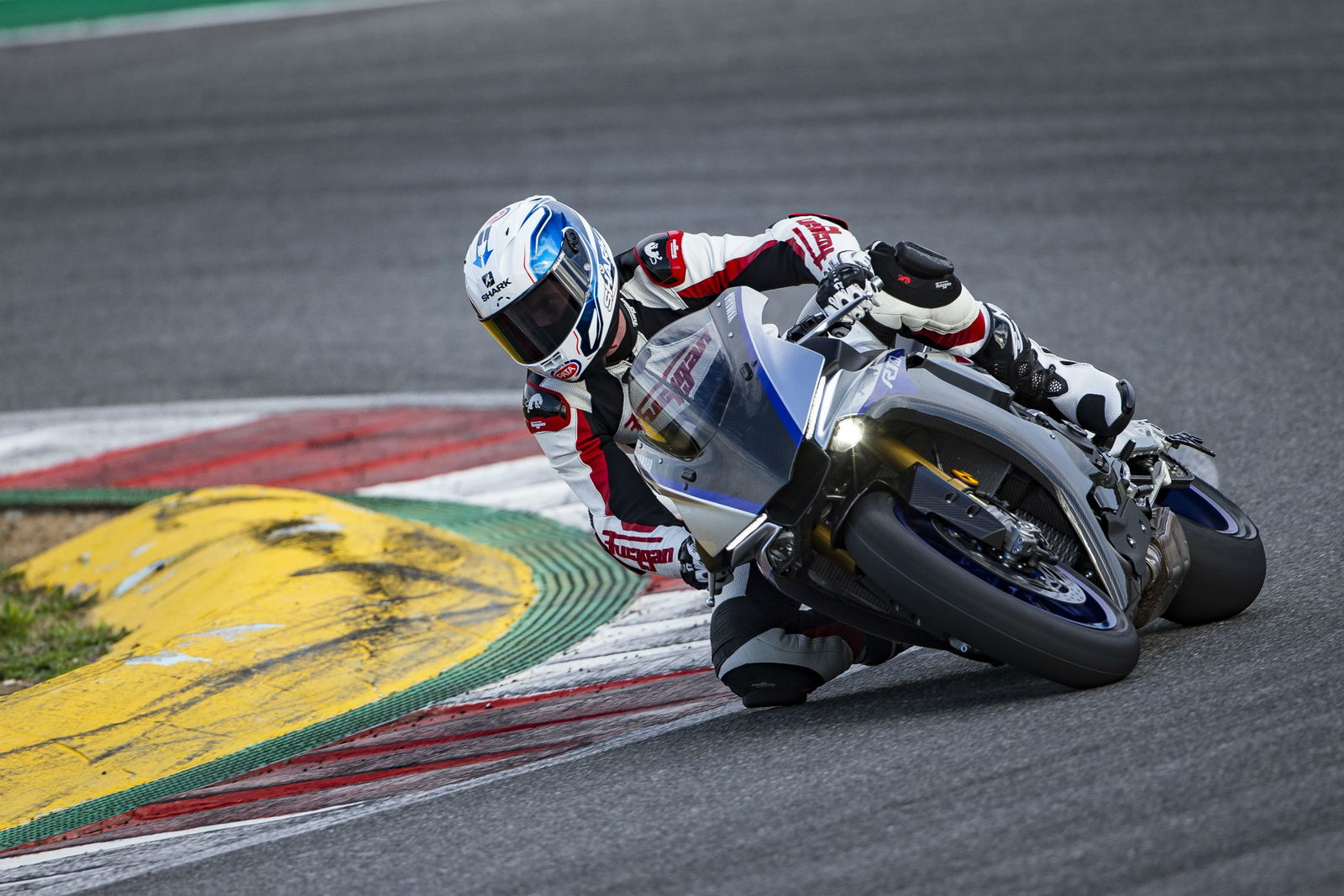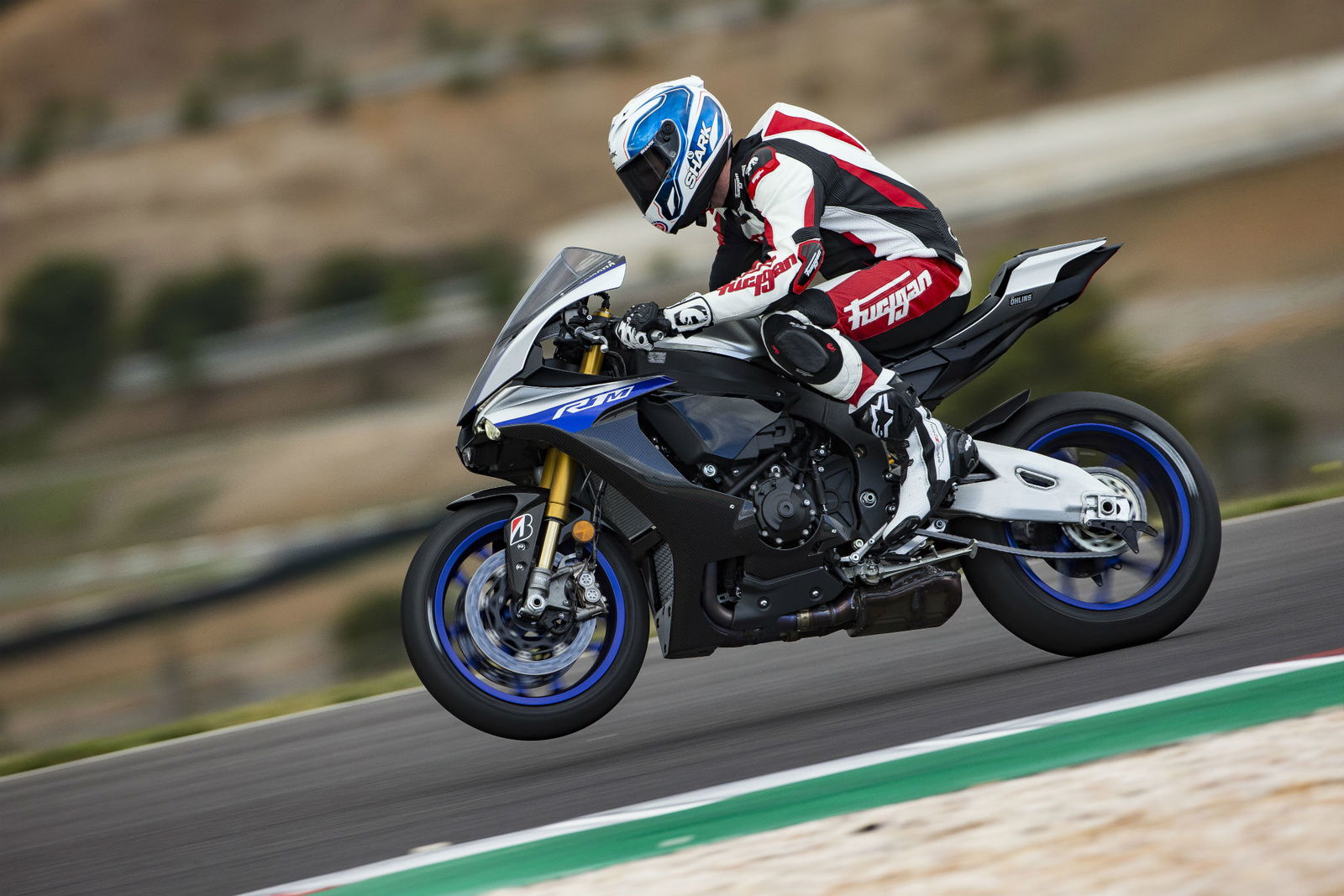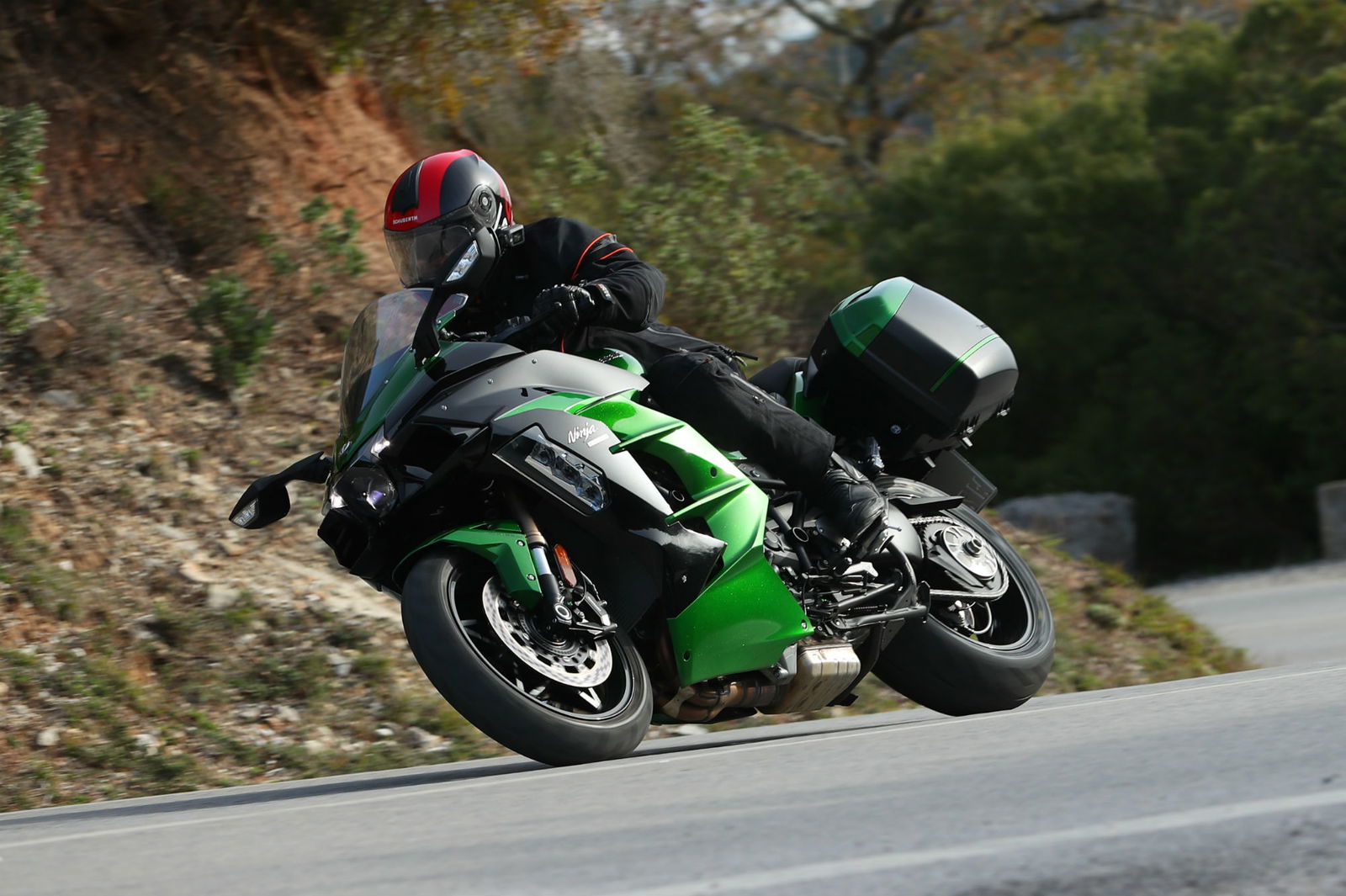2018 R1M review
The link between race technology and customer bike has never felt so close as it does with the 2018 R1M.

GONE are the days when a manufacturer’s flagship bike was a sports bike. The world has changed to make practical road bikes king where once race-replica ruled. But there’s a place still for litre sports bikes and seemingly the more sophisticated, special and genuinely ‘race-replica’ that machine can be, the more attractive it is to some who want that ultimate track bike. Introducing the 2018 Yamaha R1M.
Launched in 2015, Yamaha’s R1M is that bike. An expensive bike no question but a very sophisticated one which looks and importantly makes you feel special. For 2018 it's even more sophisticated and boasts a genuine MotoGP hand-me-down electronics package.
The changes are not immediately obvious on the 2018 R1M: inside lurks a bigger brain with the “next generation smart control unit” – the Öhlins Smart EC 2 ERS. According to Öhlins it is the most advanced fitted on any production motorcycle and, while we’ve heard ‘MotoGP developed’ or ‘race-bred technology’ so many times before, it is hard not to find that this time they mean it.

Öhlins worked closely with Yamaha in joint development on the suspension and the brains behind this operation – the inertial measurement unit (IMU) hidden inside the R1M. The difference between the EC 2 ERS and that fitted to the previous model R1M is how much information is gathered and adjusted in any one corner.
Using data from the R1M’s 12 sensors around the bike (there were nine on the previous model), the IMU is taking readings and analysing 100 times per second. The new system is adjusting live, as it were, and continuously reading bike and rider behaviour rather than adapting itself based on set parameters – that’s so old tech. New tech takes all that info and breaks up a corner into five separate “events” (formerly three): Braking, mid-corner, acceleration, front and rear firmness.

The 2018 model also has an improved quick-shift system (QSS), adding a downshifter using what racers commonly call a blipper system. Simply, that means you can ride without using the clutch and (within reason) change down when you want into a corner and the system will deal with it.
I played with the settings to increase mid-corner ‘slip control’ (affecting suspension, brakes, and power delivery), essentially testing how much I dare trust the bike in mid-corner. It is impressive to say the least. Add in more braking or acceleration support and the limit was me, not the bike or tyres. It was a test of how much I could hang on round the undulating and challenging Portimao circuit.
Yamaha has improved the bike’s lift control (LIF) too, which is not to be confused with an anti-wheelie system. It still wants to wheelie under acceleration over Portimao’s crests but LIF controls it and holds the front wheel instead of snapping power away like so many less sophisticated systems. It takes a bit of brain recalibration to stop either rolling the throttle or stroking the rear brake but trust it and it is doing everything a MotoGP bike would to propel you forward as fast as possible.

LIF, like so many elements of this R1M’s electronic control, is adjusted via the Yamaha Ride Control (YRC) function on the full colour TFT instrument panel. LIF, the suspension settings, power delivery, slip, ABS braking, acceleration control plus suspension stiffness and much more are quickly and easily set to suit your preference or riding conditions. It is all easily and meaningfully adjusted with the handlebar control switches.
Credit must also go to the Bridgestone tyres. We tested the R1M on the Bridgestone V02 slick, which is a remarkable tyre for grip feel and consistency on track. The stock R1 tested for one session had the treaded R11, which, truthfully, was basically the same and felt just as supportive in corners.
Buying choices have changed and the popularity of sports bikes in the market place has turned on its head in the last 15 years. But that’s not to say the R1M isn’t an important and still arguably ‘flagship’ model. It still waves the flag for Yamaha technology and also cements the manufacturer’s use of racing activities to development its road-going models, where electronics will end up inevitably, eventually. The link between race technology and customer bike never felt so close as it does with the 2018 R1M.
The R1M has the Ducati Panigale V4 S as a major rival. At a basic price of £19,799, the R1M comes in a healthy amount lower than the Ducati’s £23,895 price tag. Both have serious sports bike skills the like of which we’ve genuinely never seen. If you’ve got the money, the choice is basically down to your preference for Italian or Japanese weapon.
Yamaha operates a booking system if you want to buy the R1M. Around 1,000 in total will be made.

2018 R1M specs
- Model tested: 2018 Yamaha YZF-R1M
- Price: from £19,799
- Engine: 998cc in-line-four
- Power: 200hp @ 13,500rpm
- Torque: 82.9lbft @ 11,500rpm
- Wet weight: 201kg
- Tank capacity: 17 litres
- Seat height: 860mm

